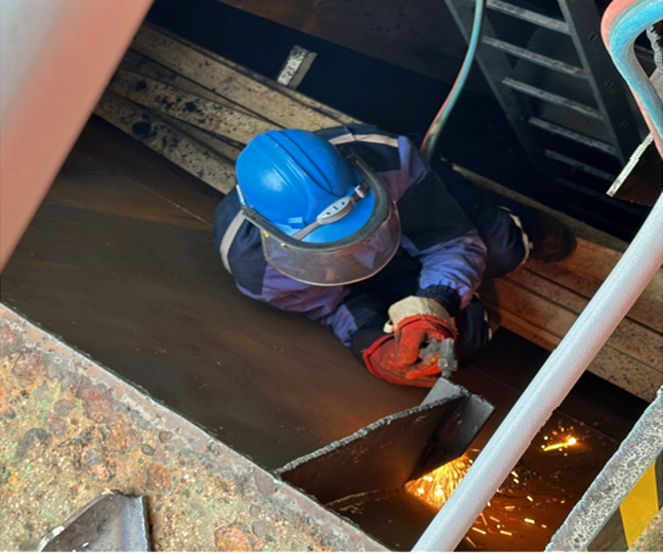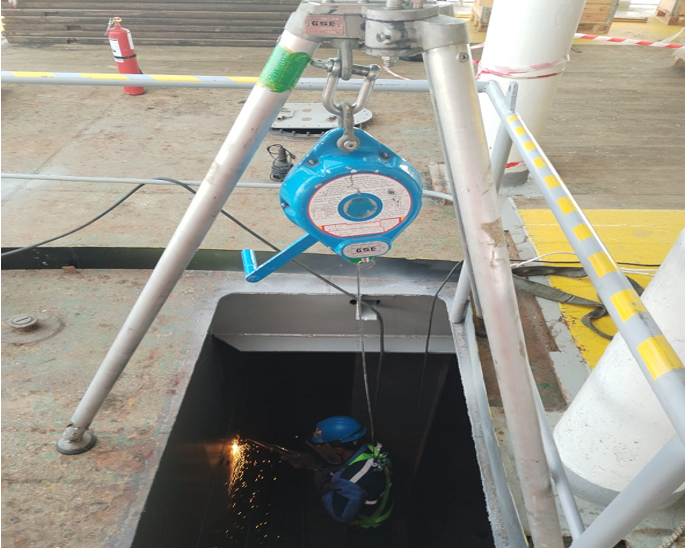Hot work whilst working at height in a confined space – job was stopped
What happened
During a site visit to a vessel, it was observed that a third-party contractor’s welder was standing on the wooden platform (the actual height was over 1.80m) inside a confined space (a ballast tank) doing some flame-cutting jobs. No fall protection guards were installed around the worker, not was the worker wearing fall arrest equipment.


The job was stopped immediately and a temporary alternative working method was arranged where the worker wore a full body harness attached to with an inertia reel to a tripod.
What went wrong
- The personnel authorizing these activities – working at height doing hot work within a confined space:
- Made no Permit to Work application for hot work nor for working at height nor for working in a confined space;
- Did not conduct a review of the risk assessment for the task in hand;
- Inadequate supervision: there was no proper Control of Work by vessel crew or management at the site before the job started, and no ongoing verification of safe working as the job continued;
- There was a lack of hazard appreciation and risk perception by the persons involved; it took someone coming in from outside, observing the job, to actually stop it.
- It was easy to work unsafely: crew members misunderstood differing internal company procedural requirements for working at height;
- Various hazards were not recognised at all. Had the worker fallen within the tank, protruding metal elements meant that there was high potential for a very serious injury.
Actions taken locally
- Reiteration of importance of thorough Risk Assessment, Permit to Work process, and Control of Work, including regular monitoring;
- Ensured more robust control of Working at Height activities and prioritized availability of engineering controls (e.g. a scaffolding platform).
Members may wish to refer to:
Safety Event
Published: 19 February 2024
Download: IMCA SF 04/24
IMCA Safety Flashes
Submit a Report
IMCA Safety Flashes summarise key safety matters and incidents, allowing lessons to be more easily learnt for the benefit of all. The effectiveness of the IMCA Safety Flash system depends on Members sharing information and so avoiding repeat incidents. Please consider adding [email protected] to your internal distribution list for safety alerts or manually submitting information on incidents you consider may be relevant. All information is anonymised or sanitised, as appropriate.
IMCA’s store terms and conditions (https://www.imca-int.com/legal-notices/terms/) apply to all downloads from IMCA’s website, including this document.
IMCA makes every effort to ensure the accuracy and reliability of the data contained in the documents it publishes, but IMCA shall not be liable for any guidance and/or recommendation and/or statement herein contained. The information contained in this document does not fulfil or replace any individual’s or Member's legal, regulatory or other duties or obligations in respect of their operations. Individuals and Members remain solely responsible for the safe, lawful and proper conduct of their operations.
